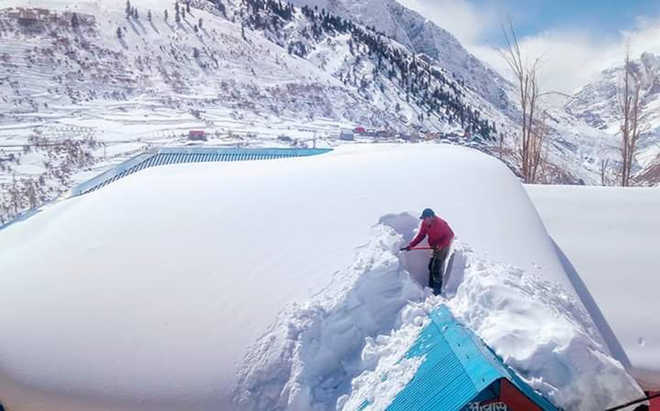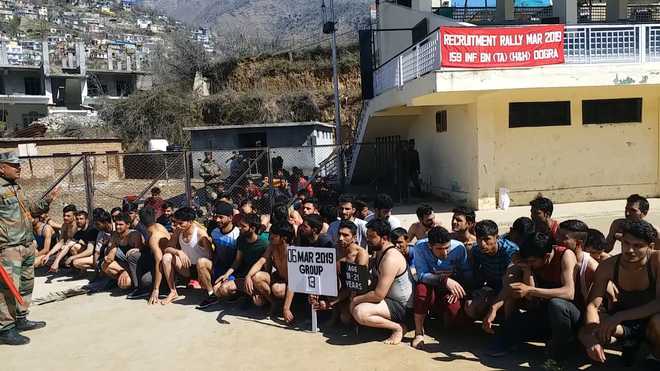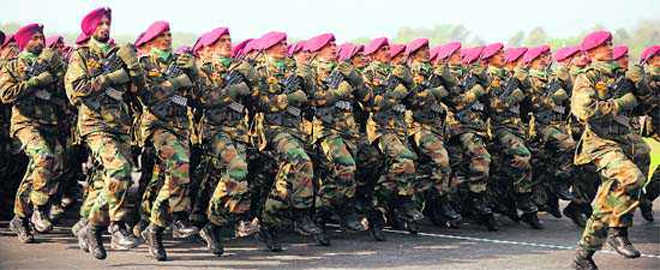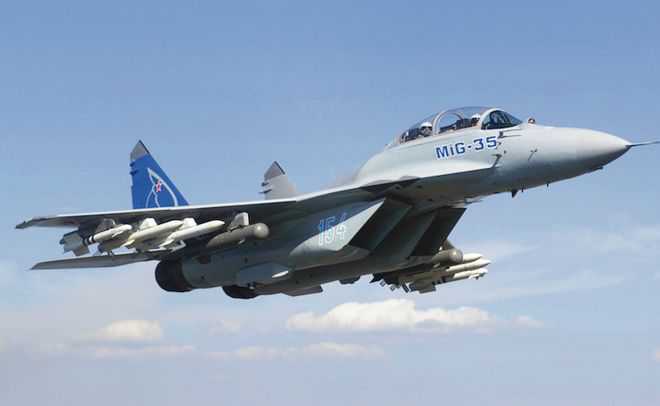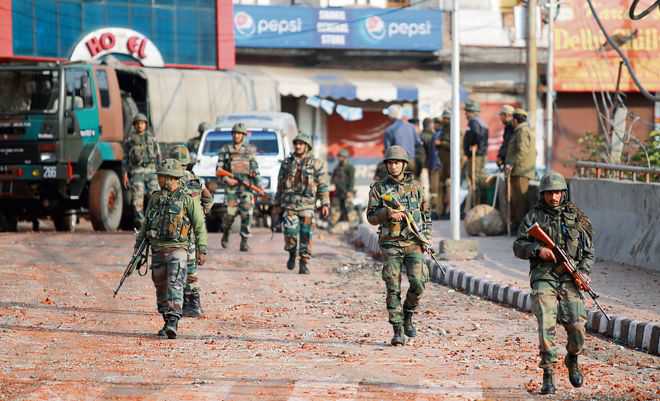Whether the US is abdicating responsibility by pulling out it’s 2000 odd soldiers, advisers and support staff from Syria and diluting its presence in Afghanistan with a 7000 troops cut (from the 1400 currently deployed), is an interesting question. As the lone superpower it has worldwide strategic interests but long deployments of troops overseas in contentious conflicts have obviously tired the public and triggered the US President to attempt living up to his election promises. Many in the strategic community are amazed at the decision; the US Defence Secretary, James Mattis leads the pack which perceives that the US has not yet achieved its strategic objectives in these regions and decisions to drawdown and pull out are premature which could hurt its future interests.
The US cannot have omnipresence but completely pulling out from deployment in a theater of conflict where complexities are huge and conflict termination still being sought by multiple players isn’t the usual US way. However, once before in 2011, the premature US pullout from the Iraq theatre, without overseeing conflict termination and resolution, led to three years of major turbulence in the Middle East with the rise and decline of the Islamic State (IS). So it has happened before, then too without realizing the impact that it would have.
President Donald Trump, being what he is, unpredictable and whimsical wishes to abide by his policy of ‘America First’ which is focused on the US not fighting others’ wars and getting regional players to shoulder more responsibility. How does all this augur for future US power and status as a world power and how deeply will these decisions affect international and regional security, is what this essay sets out to examine. It is analyzed separately for Syria first and then Afghanistan before bringing the larger aspects of the linked issues together for analysis.
The Pullout of 2000 Troops from Syria
Against the run of advice from his advisers and allies President Trump has unilaterally decided to use his own strategic sense and discretion to order the withdrawal of 2000 US servicemen from the Syrian theatre within 30 days. The orders are already under implementation. Much is being written about the manner in which the apparently maverick decisions have been taken but surely this was not something unexpected because election promises weigh obsessively on the US President’s mind and the commencement of the re-election process is but a year away. The one thing to be taken note of is the fact that the decision appears to have been largely influenced by the US President’s discussion with Turkish President Recep Taiyyap Erdogan on 14 Dec 2018 in which Erdogan attempted to prevail upon the US President to leave the war to NATO, with Turkey as its representative. Turkey obviously was uncomfortable with US presence and support to the Kurdish forces whose domination could spell threats to Turkish integrity.
The Syrian civil war has presence of a complex set of forces namely the Syrian government and its international allies Iran, Russia and Hezbollah, a loose alliance of Sunni rebel groups (mainly the Free Syrian Army), the majority-Kurdish Syrian Democratic Forces (SDF), Salafi jihadist groups (including al-Nusra Front), and the Islamic State (IS). The SDF Kurdish fighters and the Free Syrian Army are backed by the US; the SDF has proved to be the most capable of US allies in the struggle against IS. However, SDF’s apparent victory over IS has not been taken kindly by Turkey which perceives its domination as portents of its eventual alignment with Turkish Kurds to form a Kurdish homeland in a post conflict situation. Thus it is important to realize that this civil war is not the usual one with government forces aligned against just one set of rebels. No one can be certain who is an ally and who the adversary. How President Trump’s decision will overall affect the Middle East and the international security at large is for us to examine.
The sub questions which come to mind are; firstly whether terrorism in the Middle East and that gravitating towards Europe and possibly to the US mainland no more exists with the apparent defeat of the IS; second does the presence of 2000 US troops and advisers really mean much to the situation; third will the withdrawal of one element of the many parties to the war contribute to any stabilization; and fourth who will dominate the residual mess left behind by the US withdrawal.
President Trump’s reason to withdraw, besides his promise to the American people to do so, is his perceived and self-declared victory for the US. Victory and defeat in as complex a hybrid war as the one raging in Syria is a misnomer and at best a ploy towards justification. With the military defeat of the IS by the various forces in Iraq, followed by the neutralization of the IS stronghold of Raqqa in Syria, the IS lost a large strength of its fighters and its ability to wage hybrid war remains suspect. However, in a networked and virtual state it still retains sufficient capability to operate and bounce back. The US presence, albeit miniscule in terms of fighting capability ensures a professional performance by the Free Syrian Army and its coordination with the Kurdish SDF besides professional military advice for hybrid war conditions where just fighting is not the essence. Both these entities have the common aim of preventing IS resurgence as also blocking any potential victory for the Syrian government forces.
Three months ago US Ambassador James Jeffrey, the US Special Representative for the Syria Engagement, had stated that the US would stay the war to support a diplomatic initiative even as the Syrian Army was preparing to launch an assault on Idlib, the last stronghold of the Syrian rebels. Simultaneously the IS under attack by the Kurdish SDF is battling in its last bastion of Hajin where 5000 fighters are reportedly holed up; the battle is raging even now. The US pull out may not mean the end of diplomatic and material support but absence of backing for planning and training will mean two things. First, the Syrian rebel forces would be most likely decimated by the joint effort of the Syrian government, Iran and Russia with a huge humanitarian impact. Second, Turkey may enter the war to counter the Kurdish SDF to prevent it joining forces with Turkish Kurds fighting for a homeland in east and south Turkey; the US presence had thus far held back such a direct Turkish involvement. That could prevent a full scale defeat of the IS at the hands of the SDF and potentially create conditions for its possible resurgence. Even Hajin may not be the last battle as the IS has demonstrated its ability to regroup and redeploy. The US influence over Turkey’s Erdogan is not apparently sufficient to prevent him prematurely enjoining battle with the SDF.
In the above complex environment it may seem apparent that the Syrian government-Russia-Iran combine emerges at advantage. However, there can be no clear cut victory because the complex alignments may lead to further exacerbation of the situation. What are the possibilities here?
First, a new wave of displaced people is likely to occur as the Syrian government forces assault Idlib; the battle is still on and will take time to reach a final decisive phase. There can be no prediction in which direction this flow of displaced people will take place and Europe would have to brace itself once again with unpredictable consequences. Second, there is no guarantee that Bashar Assad’s forces will not employ chemical weapons to evict the rebel fighters adding further to the turbulence both militarily and diplomatically. Third, as already stated, the entry of the Turkish Army could be early to catch the SDF off balance which could lead to a reprieve for the IS even as the Kurds engage the Turks in an engagement which can have no prediction of any early termination in favor of either.
Even with uncertainty looming large Iran could be a temporary beneficiary with the Shia crescent seemingly embedded more strongly in the Levant. However two more players whose security is adversely affected are unlikely to stay silent or inactive even as their interests are trampled all over by Iran, Russia and the Syrian government. These are Israel and Saudi Arabia who would be watching the developments most carefully and would be extremely critical of President Trump’s decision. Mutuality of interests and probable proxy US backing could tempt them to attempt filling the void created by US pullout. This would be aimed at preventing the complete Iran-Hezbollah domination of the Levant.
It appears that President Trump gave little consequence to the advantage gained by Russia, from his decision. The balancing US-Saudi-Israel equation against the Russia-Iran-Syria one would now get irretrievably disturbed in favour of the latter. This makes little sense of Trump’s avowed intent of allowing Iran the space or advantage in its favour and lays bare what could happen if there is return to any turbulence in Iraq. Presence of 5000 US troops in Iraq is still keeping that nation stable. Will Trump abdicate that responsibility too to ensure his re-election? A recall needs to be made of the premature US pullout from Iraq by President Obama in 2011 without any segment of stabilization. In fact the reason why Iraq erupted with the IS presence going uncontested was due to this premature action. The effect a US pullout from Syria, under similar circumstances, will have on the larger security of the Middle East is even more unpredictable.
With an imminent cutback in US military presence in Afghanistan and the possible collapse of the Afghan government along with the Afghan National Army, both West and South Asia are heading for instability that will cause inevitable misery for the people of the region.
The US Drawdown from 14000 to 7000 Troops in Afghanistan
Even as US negotiator Zalmay Khalilzad stepped up the negotiations with the Taliban for an Afghanistan settlement, US President Donald Trump on 21 Dec 2018 indicated his intent of cutting back 7000 US troops from Afghanistan. In 2017 President had stated about Afghanistan – “a core pillar of our new strategy is a shift from a time-based approach to one based on conditions…We will not talk about number of troops or our plans for further military actions”. No doubt, earlier Barak Obama’s strategy of surge and then announced timelines of withdrawal had come cropper. Trump was expected to go steady with his strategy of attempted stabilization and negotiation with presence of just a division worth of troops for basic security, training, advice and back up. The fighting is in the hands of the local Afghan National Army (ANA) which has suffered over 28,000 killed in the last three years. If statistics matter then the US Forces in Afghanistan lost 2372 killed till date in 17 years, with 20,320 injured; by comparison in Vietnam, in 14 years the US lost 58,320 soldiers killed. Apparently the long US deployment more than the casualties, has led to erosion of stamina and a perception that the war in Afghanistan was fruitless and unlikely to deliver what the US was looking for. The question thus arises – what is the US looking for in Afghanistan and is any of that achievable.
With an accepted ball park expenditure of 3 trillion US$ in 17 years and an approximate high of 140,000 troop deployment at one stage in Afghanistan the US may have expected total victory with the vanquishing of the Taliban and no portents of its return. Such an aim was utopian in modern hybrid wars and Afghanistan was long known for being the graveyard of empires. What the war did achieve and continues to achieve no doubt, is the fact that it placed controls on the freedom that radicals had come to enjoy, displaced and partially eliminated the leadership of the Al Qaeda and prevented the conversion of the Af-Pak space into a citadel for Islamic radicals from where they could operate against the world with impunity. Had there been greater cooperation from Pakistan perhaps the situation would have been far more positive; the US apparently had constraints on coercing Pakistan due to various factors. To maintain the status quo, on behalf of the world, with 14,000 troops and some billions of dollars, is not what President Trump now wishes because he perceives, right or wrong, that an eventual full withdrawal will get him the Presidency again in 2020. He could have waited longer to allow Zalmay Khalilzad to find some clarity with the Taliban but the haste appears to show Khalilzad has given some assurances to the Taliban of cut backs as a confidence building measure. Which way the negotiations go is only one side of the narrative; the more important one is what the effect of this is going to be on the internal security situation, the political future and more importantly the regional security environment beset as it is with Pakistani intransigence. There are just too many issues involved; primacy is given to a few below with the analysis being India centric.
Even with US cutbacks it is not as if the Taliban will rule in Kabul immediately. This arrangement could remain for long enough and even if an agreement cannot be reached with the Taliban, status quo could be possible; although the slow erosion process of the stability and hold of the National Unity Government (NUG) would begin. The spoil sport here is likely to be Pakistan which is now sensing its first victory in years with increase of its own strategic relevance. It will step up support to the Taliban with Chinese and perhaps even Russian backing. The crucial issue is financial support to the beleaguered NUG.
The US, under accusation of a walk away from allies and its interests, must not exacerbate the situation further by any actions in the non-military domain. After pumping 130 billion US$ to support Afghanistan since 2002 the international community still has little to show in terms of Afghan self-sustainment. The government still needs 80 percent foreign aid to sustain its annual expenditure and without the donor community’s assistance its 174,000 strong ANA and 150,000 strong Afghan National Police (ANP) cannot be maintained. Any erosion here will sound the death knell of the NUG and Pakistan will be backing that. It probably has Taliban assurance of being able to govern Afghanistan with little financial backing. The Saudis and UAE, two of the three nations which earlier recognized the Taliban government when in power, may continue that financial backing since Pakistan is in no position to even finance itself. The Chinese and Russian would also step in to keep the US out. Iran has since improved its relationship with the Taliban. The strangest bedfellows may thus come together but with different interests; Saudi Arabia, UAE, Pakistan, Russia and China with Iran somewhere on the periphery.
Famously Donald Trump said not too long ago, – “We cannot repeat in Afghanistan the mistake our leaders made in Iraq”. He referred to Obama’s premature pre-conflict termination pullout from Iraq which allegedly gave the space to terrorist entities. Surprisingly Trump is not mindful of that statement with these decisions. If re-election is blinding his strategic decision making then he must remember that he could lose greater credibility for doing what he critiqued Obama of doing at one time. ‘America First’ is great as a slogan but there can be many perceptions about what is great for America; what is good in the short run may not be so good in the long run.
The Indian Connect and Interest
India’s interest in Afghanistan is strategic and historic. Afghanistan forms a part of the land mass of South Asia which is Indo-centric. In recent weeks Pakistan has followed a policy of first supporting India’s involvement in the peace parleys for Afghanistan and then denying any necessity to have India at the table. However, through the last 18 years India has invested much time, resources and energy to support the stabilization of Afghanistan. It has been an avid supporter of US presence and the National Unity Government (NUG) as a return of the Taliban would mean a restoration of Pakistan interests. From a sheer security angle there should be no hesitation to put down the fact that a substantial part of the Pakistan Army reserves and border guarding forces would get relieved and be available for deployment against India.
India as an avid supporter of President Ashraf Ghani’s NUG, bided its time in 2015 while it was ignored by Ghani; it was pragmatism and good thinking by India’s strategic leadership. It must continue supporting the NUG having invested energy and resources through political outreach, financial support, military training and soft power. That is because it must not be misled by any perception that the Afghan government is on its last legs and bound to fall anytime soon. No doubt the risk element from President Trump’s decision could weaken the NUG but its abandonment by its traditional supporters would put it on a sure course of extinction which is not to anybody’s advantage except arch rival Pakistan. Any signal of abandonment would also place at risk future financing by international donors.
India could face a serious challenge in the existence of its consulates in Jalalabad, Kandahar, Mazar e Sharif and Herat, long suspected by Pakistan of activities against its interests; especially the former two. It will need to read the security situation closely to comprehend how safe these missions remain, although primary security remains the responsibility of the ANA and ANP. There will be efforts by Pakistan to cultivate influence in these organizations to upend Indian interests.
With only 7000 US troops likely to remain in the country, the Afghan Taliban may talk but could simultaneously press home their advantage by accelerating the pace of attacks. The reduction in force level could now give the Taliban confidence to work towards a full withdrawal of US forces as a reasonable expectation. What can surely be expected is a surge of presence of intelligence agencies of different hues and much Pakistani foot print. Efforts will be afoot to unhinge Indian presence although it is common knowledge that the average Afghan detests Pakistan and remain favorable to India. Fortunately Pakistan does not have that kind of money to flaunt here although what it can exploit through clandestine mafia and drug cartels is something else; plus sensing opportunity money from Saudi Arabia and others could be for the asking.
While nothing may be lost with US troop reduction it certainly does open opportunities for resurgence of the Pakistan and Taliban nexus, this time backed by a China-Russia axis too. What the US needs to realize is that by leaving the Afghans to the wolves it would not be securing its homeland. The proverbial long hand of revenge of the radicals could well strike there too. It is better to stick it out with minimal casualties and some expenditure which will probably buy a safer peace.
Is Talking to the Taliban in India’s Interest
Interestingly, in the wake of the Raisina Dialogue 2019 and the comments of the Indian Army Chief General Rawat therein, ‘talking with the Taliban’ has become a point of discussion in strategic circles. What The Army Chief was alluding to was that if as the adversary in chief of the Taliban, the US could initiate talks with it why should India hold back; it needs to critically examine its current and long term strategic interests and balance its options. What the Army Chief has said is actually what most in Government of India and the Indian strategic community do believe in but since as policy India supports the NUG making any overtures to the Taliban may dilute NUG’s confidence in its relationship with India. What it calls for is greater assurance from India to the NUG drawing parallel to the US approach of talking to stakeholders for eventual hopes of peace. There is an inherent justified fear in India’s security establishment about stepping outside its comfort zone policy of supporting and being in sync with the NUG. However, Afghanistan’s situation being what it is and the US unlikely to pursue an interest which meets India’s strategic needs it is time that the entire security establishment of India gave its Afghan policy a fresh think; not just a re-think.
Rounding Up the US Decisions
The US President appears serious about execution of his decisions and pullout from Syria has begun. To project that it remains a player without troop deployment the US could yet employ coercion through standoff resources such as air power or missiles fired from a naval task force, if and when called for. It will support Israel and Saudi Arabia to pursue its interests by proxy although both nations have no troop presence in the battle zone. In modern hybrid warfare, it is as important to ensure that its control over networks remains intact, something which it will pursue. However, it is a risk to go against the advice of a professional adviser such as James Mattis. For all the avowed focus on Iran and the intent of running that nation’s nose to the ground, President Trump has to realize that he has actually yielded space in the very zone where Iran’s power is increasing. It remains to be seen whether the US President will do the same act in Iraq. Trump may not finally drawdown from Afghanistan to the extent he has indicated. The progress in the parleys with the Taliban will also be the decider. With the Trump obsession with China and the latter’s enhancing power it should be a matter of concern for the US whether it can yield strategic space in such a crucial area as Af-Pak where another adversary, Russia is also likely to make inroads.
